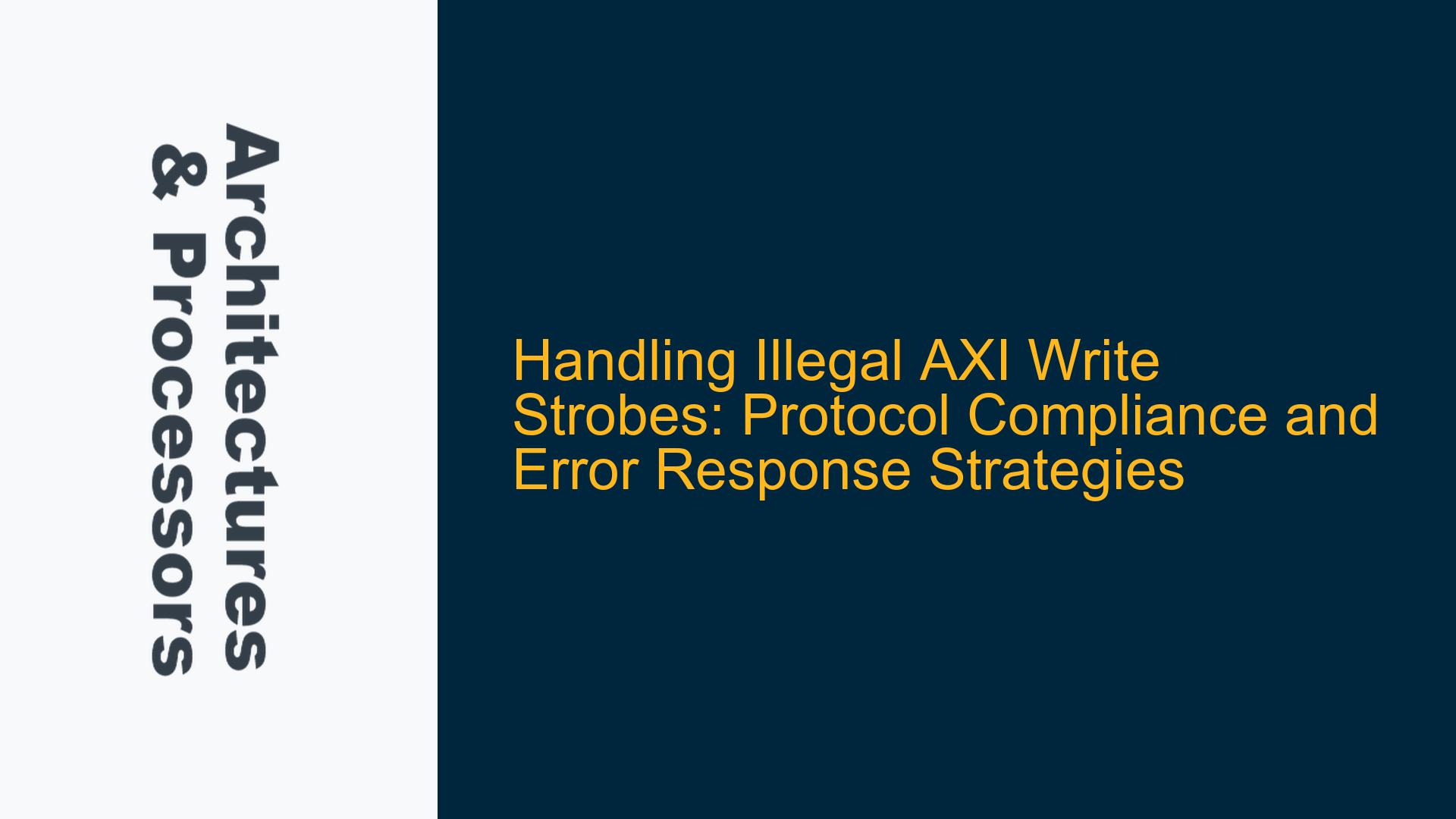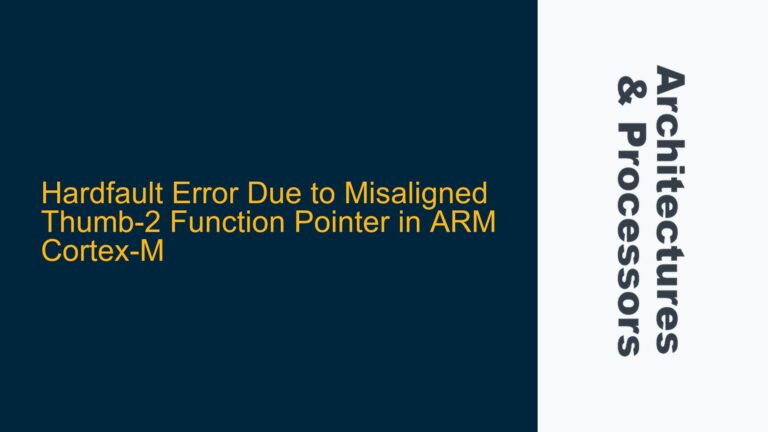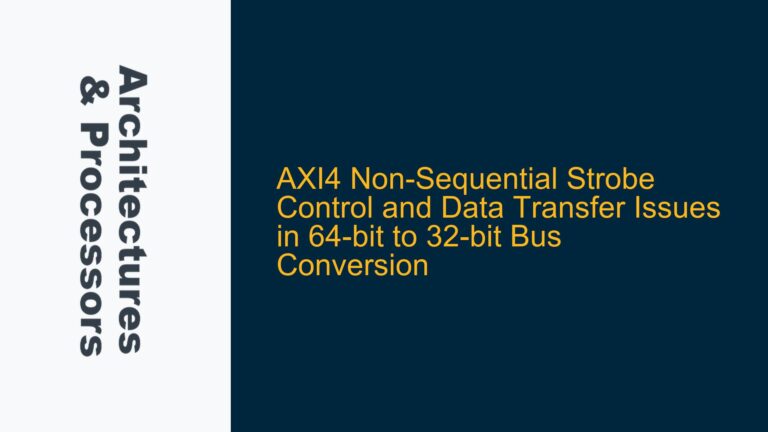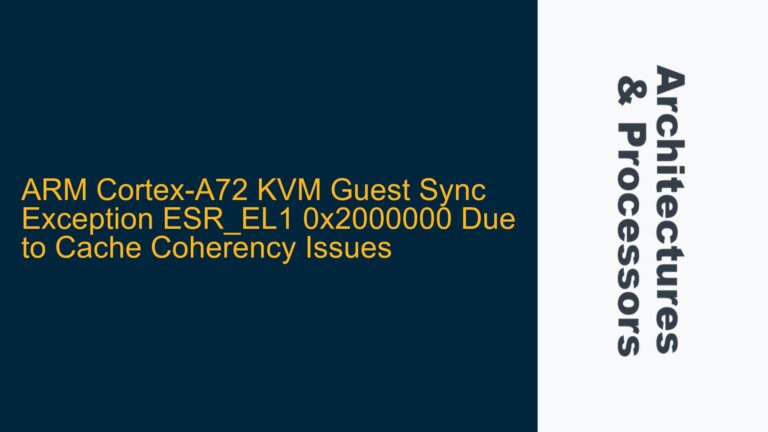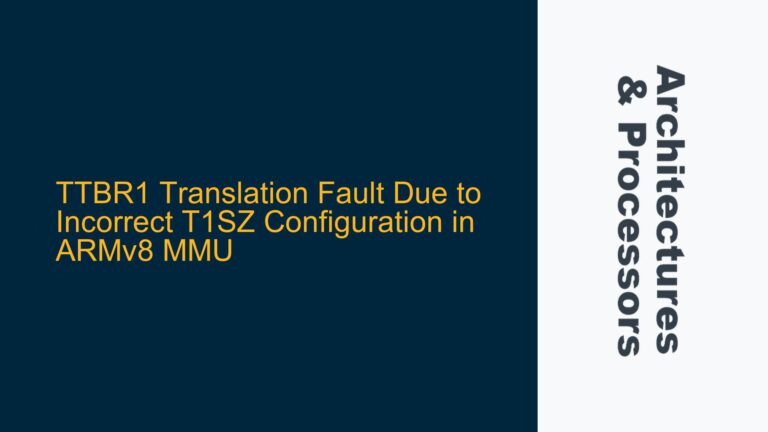AXI Slave Behavior with Illegal Write Strobes: Protocol Ambiguity and System Impact
The Advanced eXtensible Interface (AXI) protocol, widely used in ARM-based SoCs, defines a robust framework for high-performance on-chip communication. However, the protocol does not explicitly mandate how an AXI slave should handle illegal write strobes (WSTRB). This ambiguity can lead to inconsistent behavior across different implementations, potentially causing system-level issues such as data corruption, security vulnerabilities, or even system crashes.
An illegal write strobe occurs when the WSTRB signal does not align with the AXI protocol’s requirements. For example, in a 32-bit data bus, the WSTRB signal is a 4-bit vector where each bit corresponds to a byte lane. If the WSTRB signal is set to a value like 0b11111 (5 bits) or 0b1010 (unaligned strobe for a 32-bit write), it violates the protocol. The AXI specification assumes that all masters will generate legal WSTRB signals, but in real-world scenarios, bugs in master designs or unexpected system conditions can lead to illegal strobes.
The primary challenge lies in determining whether the AXI slave should passively accept the illegal strobe, reject it, or take a more nuanced approach. The protocol does not provide a clear error-handling mechanism for such cases, leaving it to the designer’s discretion. This lack of standardization can result in interoperability issues when integrating IPs from different vendors or when scaling the system with additional components.
Moreover, the system-level impact of illegal write strobes can be severe. For instance, if an illegal strobe is ignored, it might lead to partial writes, corrupting memory contents. If the slave rejects the entire burst, it could disrupt critical data transfers, affecting system functionality. In safety-critical systems, such as automotive or medical devices, these issues could have catastrophic consequences.
Root Causes of Illegal Write Strobes: Master Design Flaws and Protocol Misinterpretation
Illegal write strobes typically arise from two main sources: design flaws in the AXI master and misinterpretation of the AXI protocol. In the case of master design flaws, the master might generate incorrect WSTRB signals due to bugs in its control logic. For example, a master might miscalculate the strobe values for unaligned addresses or fail to handle burst transactions correctly. These issues are often uncovered during system integration or post-silicon validation, making them costly to fix.
Another common cause is protocol misinterpretation. Designers might incorrectly assume that certain WSTRB patterns are legal or fail to account for edge cases. For instance, a master might generate a WSTRB signal that spans multiple words in a burst transaction, violating the protocol’s byte lane alignment rules. This can happen if the master’s address calculation logic does not properly handle wrap-around or incremental bursts.
Additionally, system-level issues such as clock domain crossings, reset synchronization, or power management events can also lead to illegal strobes. For example, if a master is reset during an active transaction, it might generate corrupted WSTRB signals. Similarly, clock glitches or timing violations can cause transient errors in the strobe signals.
The lack of robust error detection and handling mechanisms in the AXI protocol exacerbates these issues. Unlike other protocols that define specific error codes or recovery procedures, AXI leaves the response to illegal strobes undefined. This can lead to inconsistent behavior across different slaves, making it difficult to predict how the system will react to such errors.
Implementing Robust Error Handling: Protocol Checkers, Error Responses, and System-Level Strategies
To address the challenges posed by illegal write strobes, designers must implement robust error-handling mechanisms at both the slave and system levels. At the slave level, the AXI slave should include protocol checkers to detect illegal WSTRB signals. These checkers can be implemented using combinatorial logic that validates the WSTRB signal against the transaction’s address, size, and burst type. For example, in a 32-bit data bus, the checker should ensure that the WSTRB signal is a 4-bit vector and that it aligns with the byte lanes specified by the address.
Upon detecting an illegal strobe, the slave should respond with a BRESP=SLVERR (Slave Error) signal. This indicates to the master that the transaction has failed due to a protocol violation. The slave can then choose to either reject the entire burst or accept only the valid portions of the transaction. The choice depends on the system’s requirements and the severity of the error. For instance, in a safety-critical system, rejecting the entire burst might be preferable to avoid data corruption.
At the system level, designers should implement protocol checkers on the AXI bus to monitor all transactions for compliance with the AXI protocol. These checkers can be integrated into the system’s verification environment or implemented as standalone modules in the RTL. They should flag any illegal WSTRB signals and provide detailed debug information, such as the transaction ID, address, and strobe value. This information can be used to identify and fix the root cause of the error during simulation or post-silicon validation.
In addition to protocol checkers, designers should consider implementing error recovery mechanisms. For example, the system can include a watchdog timer that resets the master if it detects repeated protocol violations. Alternatively, the system can use error-correcting codes (ECC) or redundancy to mitigate the impact of data corruption caused by illegal strobes.
Finally, designers should document the error-handling strategy in the system’s specification and ensure that all IP providers adhere to it. This includes defining the expected behavior for illegal strobes, the error response codes, and the recovery procedures. By standardizing the error-handling approach, designers can improve the system’s robustness and interoperability.
In conclusion, handling illegal AXI write strobes requires a combination of protocol compliance checks, error responses, and system-level strategies. By implementing these measures, designers can ensure that their AXI-based systems are resilient to protocol violations and capable of recovering from errors without compromising functionality or security.
